/ what we do / habitat & biodiversity
habitat & biodiversity
Where the bear lives well, human beings live well.
A healthy ecosystem is the basis for the survival of all species, including humans.
This is why Save the Bear is involved in carrying out various environmental improvement actions to encourage the expansion of bears and ensure a healthy ecosystem for all the people who live there. Save the Bear operates primarily in what are called “ecological corridors.” These are very large areas in the central Apennines, serving as connections between different protected areas. These mostly mountainous territories represent vital areas for the expansion of bears, but they do not fall within any protected areas. Through our work we try to prepare these territories for the arrival of bears, making them more welcoming and safe.
field interventions
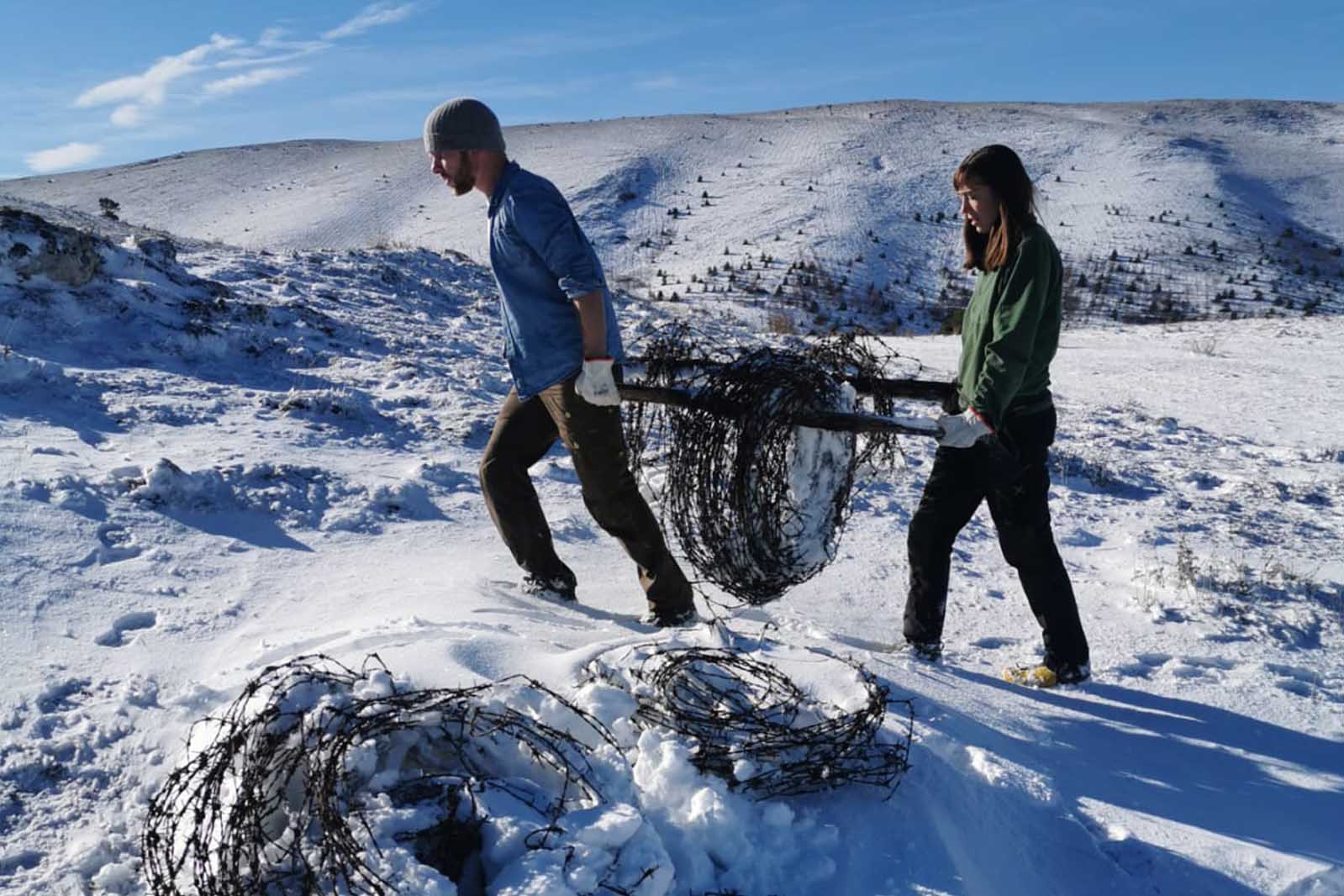
Barbed wire removal
In the past it was common to fence off agricultural activities and reforestations with barbed wire to protect them from ‘incursion by domestic and wild animals. This practice, now banned and fallen into disuse, has left hundreds of miles of abandoned barbed wire in the mountains of the central Apennines. In addition to being a detractor of environmental quality, barbed wire fences pose a danger and barrier to animal survival and movement. Since 2018, Salviamo l’Orso, thanks to the vital work of volunteers, has begun to identify areas of barbed wire presence and remove it. This is challenging manual work: the places to be reached are often remote, and the wire is removed by hand and brought back downstream for disposal. However, “the game is worth the candle”: since 2018, Save the Bear volunteers have been able to remove an average of 10 km of barbed wire per year (with peaks of up to 20 km!).
meters of barbed wire removed so far
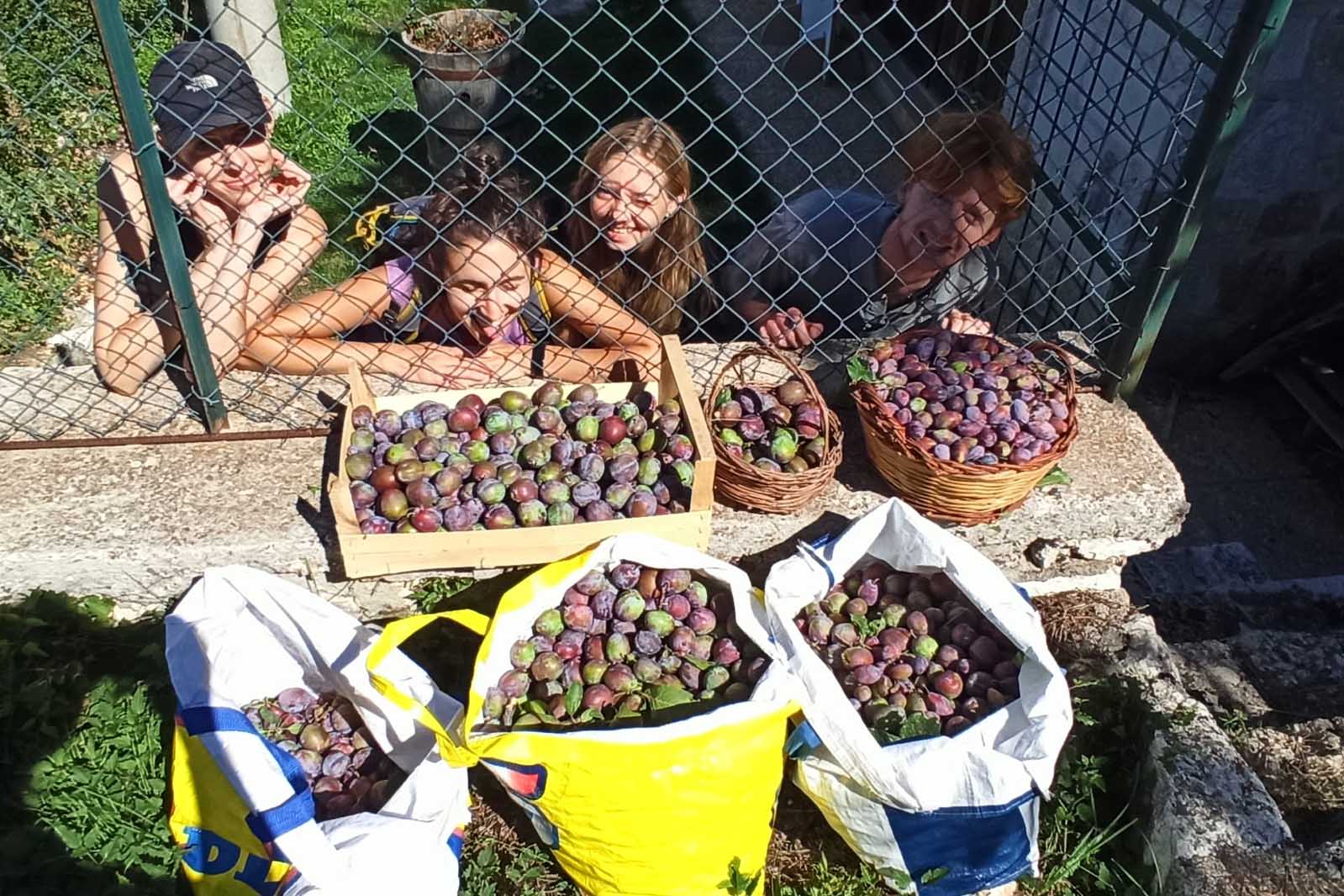
Natural food sources
Various areas in the central Apennines were used for cultivation in the past. With depopulation and industrialization vast areas have been abandoned and are slowly returning to nature. These include numerous abandoned orchard fields far from the villages. These areas are potential natural food sources for resident and expanding bears. In order to encourage bears to colonize new areas, Let’s Save the Bear has been carrying out pruning of orchards to make them more fruitful and planting fruit trees since 2017. Pruning operations are carried out each year in late winter and fall, before the birds begin nesting and at the dormancy period. These are “light” interventions, since we want the environment to remain as natural as possible. Salviamo l’Orso volunteers remove competing plants, such as rose hips and brambles, that threaten to choke the tree and conduct a thinning of dead branches. Planting is done either by planting fruit trees, selecting the most suitable species, or by throwing so-called “seed bombs”: wrappers with the seeds of various fruit species inside that are part of the bear’s diet.
pruned trees
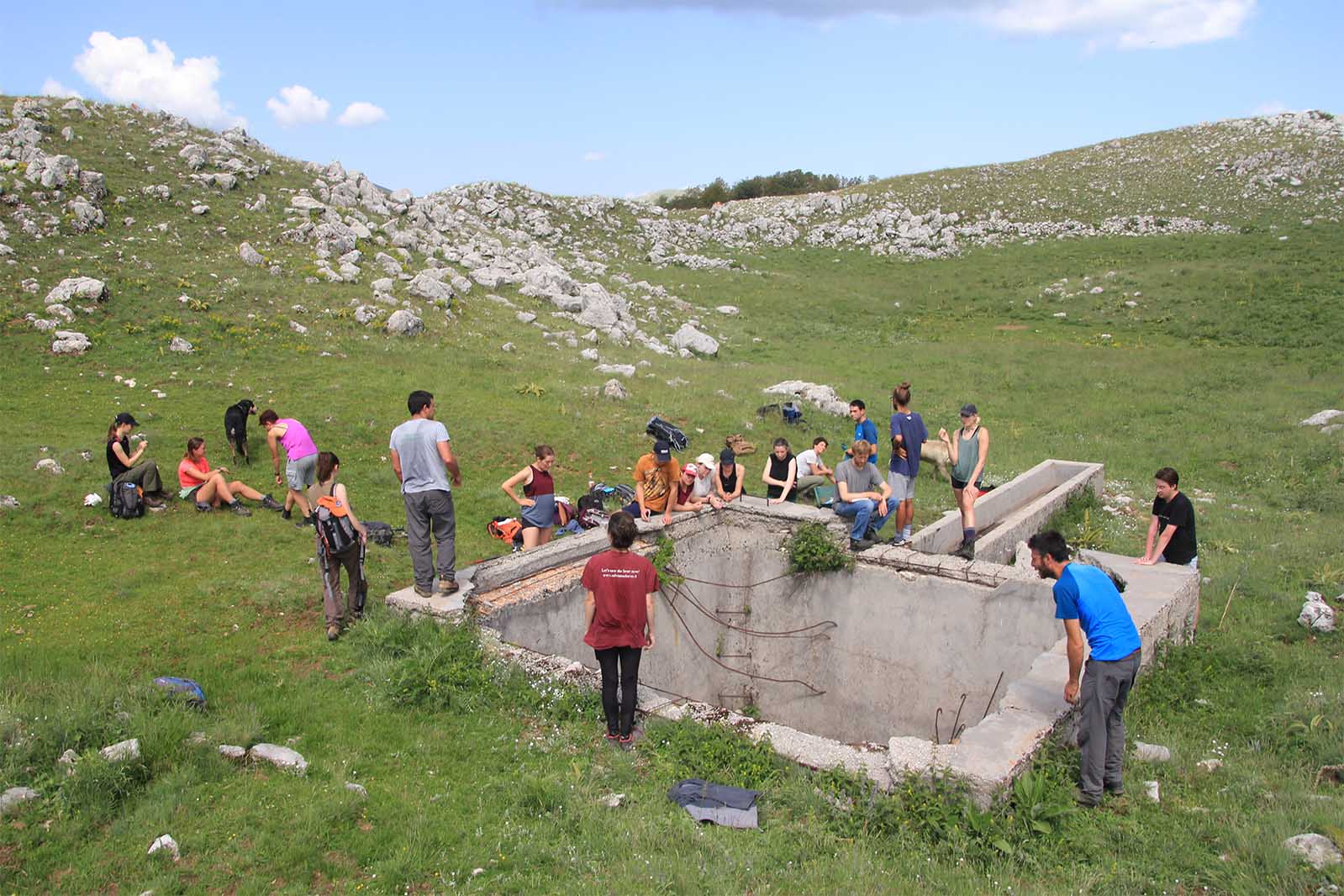
Securing the water collection tanks.
The central Apennines is a karst environment and a rather arid climate. For this reason, shepherds in the past built tanks, varying in size, to collect rainwater for use during the summer period. These once indispensable pools in the mountains are now abandoned and are a real trap for wild animals that come in to water and refresh themselves but cannot get out. In 2010, two bears were found drowned dead in one of these pools; the tragedy was repeated in 2018. In this case who lost their lives was a mother bear with her two cubs. In the wake of these very serious events, Save the Bear began efforts to map and secure, or close, these ponds.Given the great variability in the size and location of the ponds, the interventions that Save the Bear undertakes can range from simply closing them with a grid, to dismantling the puddle, to having construction companies take over the work. Given the scarcity of water in times of drought, whenever possible, we try to keep these tanks usable by building ramps for the animals to climb out.
pools secured
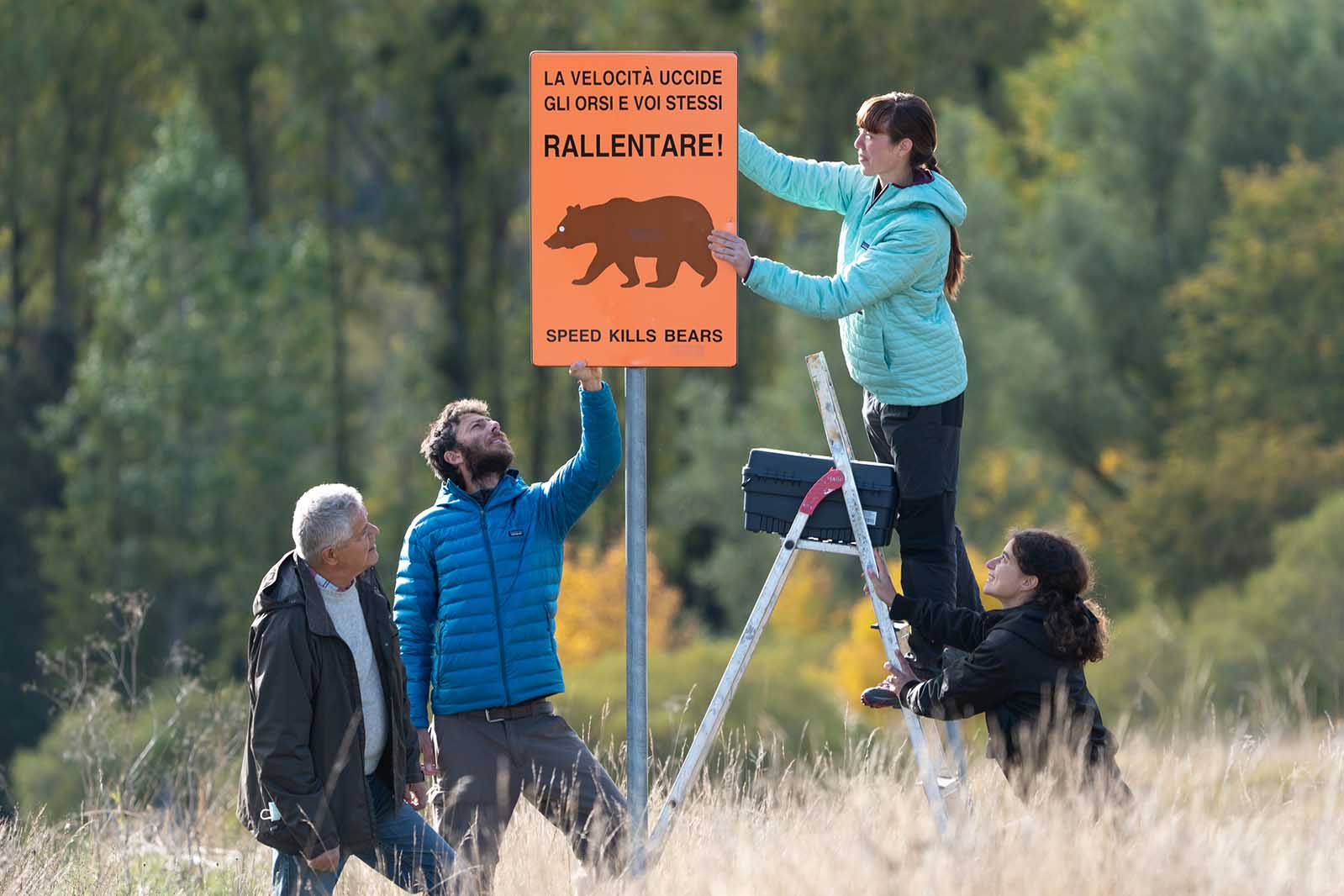
Safe roads
Road accidents are among the leading known causes of death of the Marsican brown bear. The presence of roads causes habitat fragmentation. Animals living in these territories need to move around, and in doing so, they are sometimes forced to cross roads. The risk of traffic accidents is particularly high on roads where there are no, or not enough, serviceable underpasses and overpasses. Another widespread cause of accidents is related to speeding. Regarding road safety, Save the Bear engages on several fronts. We install road signs to sensitize drivers to maintain moderate speed in areas of bear presence We install optical and acoustic reflectors; these devices are placed on reflector posts. When hit by car headlights, they produce a bright beam and a high-pitched sound that startles any animals on the side of the roadway, discouraging them from crossing at the moment the car is passing. Let’s open underpasses and overpasses: Let’s Save the Bear commits each year to mapping, monitoring, and cleaning up underpasses and overpasses to ensure that they are free for wildlife passage.
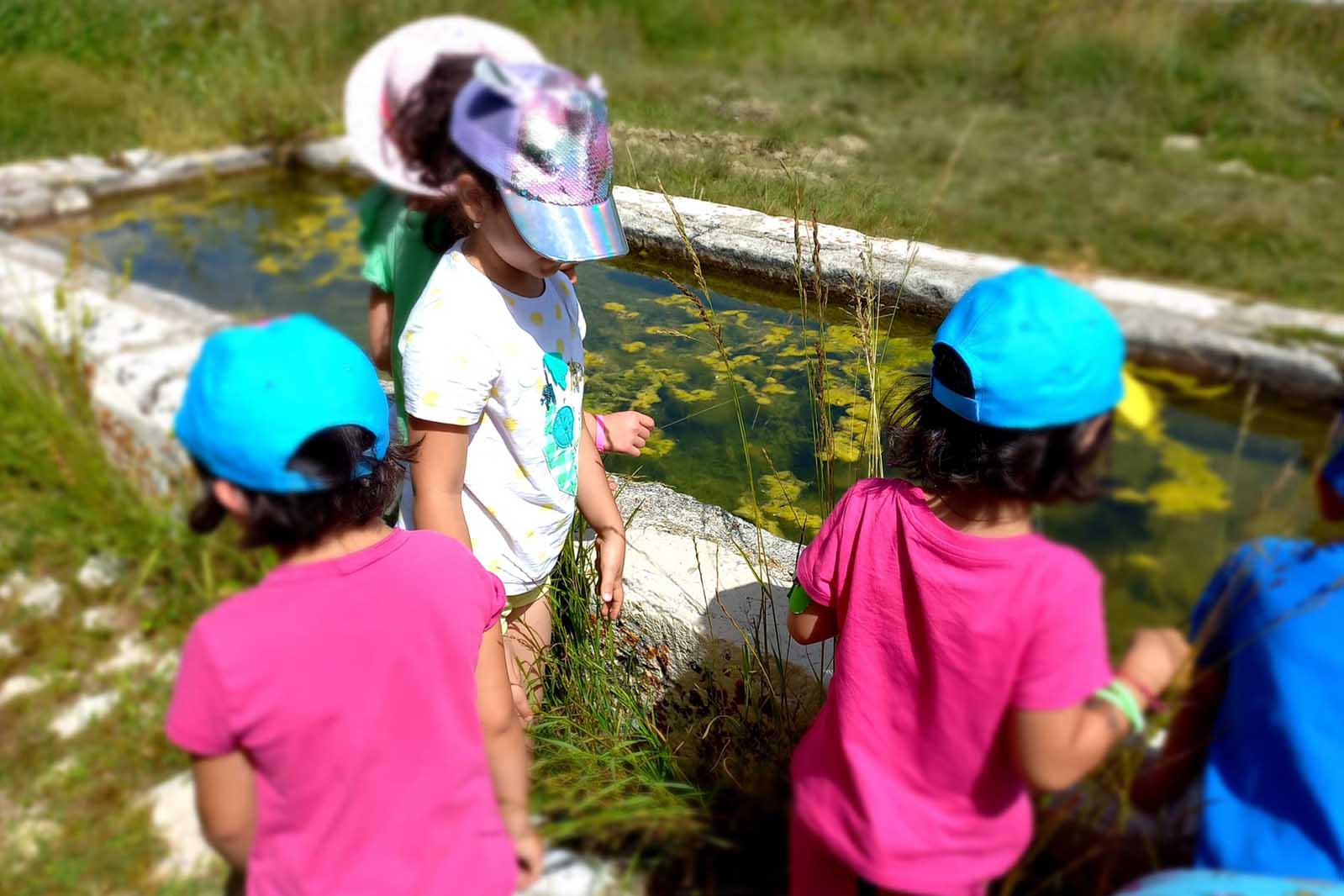
Drop by Drop
The central Apennines is an arid and karst environment. Especially in the summertime, and in light of climate change leading to increasingly less snowy winters and increasingly hot summers, the availability of water becomes of paramount importance.Save the Bear is working to increase the water resources available for wildlife by fixing unused water fountains in mountain areas and making small interventions on natural pools to make them more drought-resistant. Interventions are labor-intensive because they often require reaching remote locations in the mountains, and, especially in the case of fountains, can be very expensive.

Stay informed,
Find out what we do, once a month.
Sign up for the Save the Bear newsletter, each month you will receive our updates from the field, learn about our stories, and be part of our family.

Save the Bear
Association for the Conservation of the Marsican Brown Bear ONLUS
Olive Park Street, 11
65015 Montesilvano (PE)
Italy
VAT NUMBER: 02189990688
CF: 91117950682
MAIL: info@salviamolorso.it
PEC: ass.salviamolorso@pec.it

